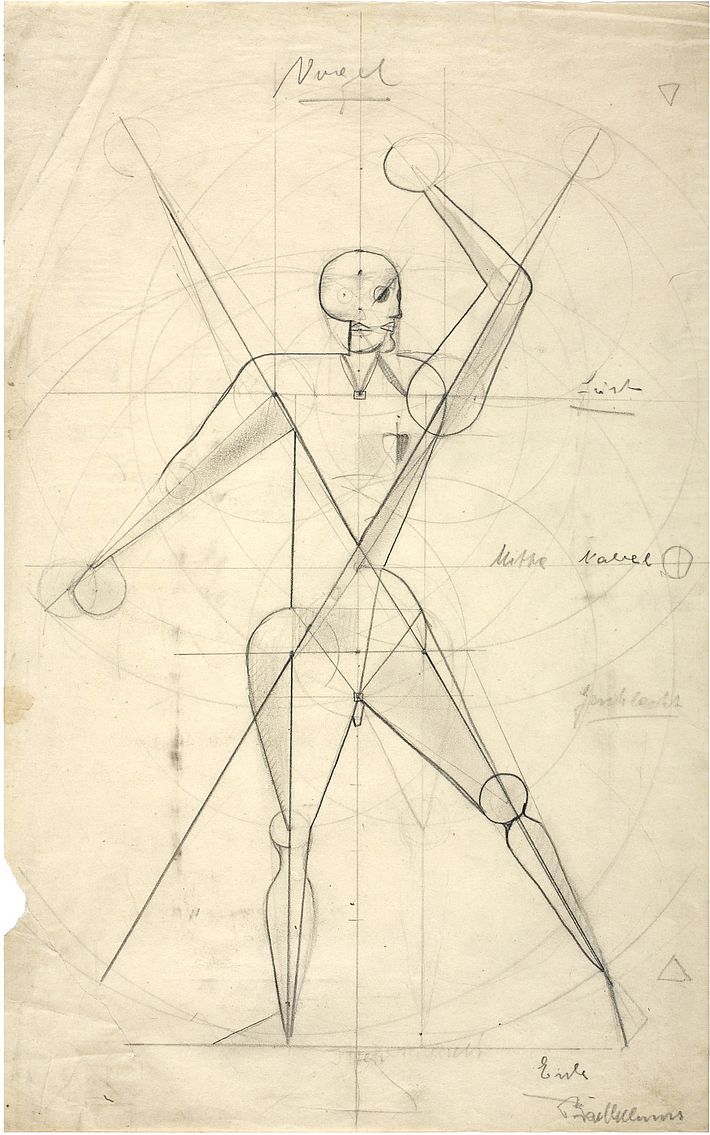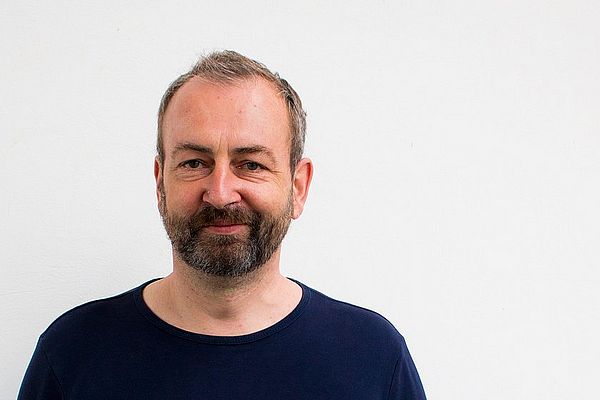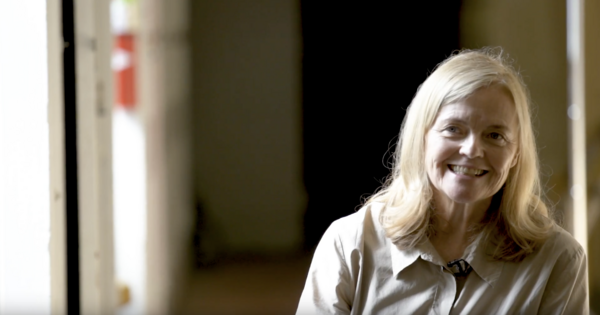Should Architects Dance?
Bauhaus as a Spatial Stage
A playfully improvised, “mechanical” theater had already developed in and next to the Bauhaus stage workshop in Weimar, which was formally oriented towards previous Dadaist, Futurist and Constructivist experiments. The peculiarity of these stage experiments, however, was that they were not so much about a renewal of the theater operation as they were about a communal learning of design—applied theater for designers as well about the community design itself.

About the Author
Torsten Blume (Dessau) works as a research associate, artist and choreographer at the Bauhaus Dessau Foundation.
[Translate to English:] 1
In 1923, Oskar Schlemmer was appointed head of the stage workshop not least because of this, in order to systematically arrange the abstract complexes of form and movement created in such spatial experiments and to further develop them pedagogically. The task was to finally devote himself to the stage workshop Gropius set up in 1921 and to examine the “moving, living, artistic space” and in general the “phenomenon of space ... through the movement of mechanical or organic bodies ... and through the vibrations of light and sound in it”.
[Translate to English:] Text
Accordingly, the medium of the Dessau stage experiments and “Bauhaus dances” was the “dancer-man” abstractly geometricized as an “artificial figure”. However, this dancerman was less an expressive human being but rather a transformation of the human body as an architectural or “architecturized” apparatus for elementary artistic spatial productions. These were especially made possible by the fact that the dancerman, in moving, commits himself to the laws of space, or, as Schlemmer puts it, lets himself be “bewitched” by space and its geometries and tectonics, i.e. transformed in his form and habitus. Hence Schlemmer’s “Bauhaus Dances” can also be described as experimental arrangements of a new anthropological architectural theory; at any rate, they fit perfectly with the Bauhaus training of architects and interior designers.
When, in 1927, Schlemmer described “the efforts with which the stage at the Bauhaus organically fits into its overall complex”, he once again emphasized the “exploration of the design elements” taking place in the stage workshop and that “the efforts which want to summarize universally in the direction of the building ... naturally also refer to the area of the stage”. Schlemmer also repeated Gropius’ dictum that the stage is “an orchestral complex like the building”, “which only exists through the interaction of many and different forces”.
Just as “terms such as norm, type, synthesis ... (describe) the path” on which the Bauhaus as a whole finds itself, so, according to Schlemmer, this would also apply to stage work: “We strive for the typical, for the type, number and measure, for the law ... as a regulative of an intense feeling for the world and life”. But the Bauhaus master also wrote: “Although the tendencies of the Bauhaus are also those of our stage, the following elements are naturally in the foreground of our interest: space as part of the larger overall building complex. Stage art is a spatial art and in the future it will be so to a greater extent. For the stage, including the showroom, is above all an architectural-spatial organism in which all events—to it and among themselves—are spatially related ... If the narrow stage space is even blown up and the concept of space is transferred to the building overall ... a thought that is fascinating in view of the new Bauhaus concept of spatial stage could be demonstrated in a way that is hardly known.” The Bauhaus student Andor Weininger, who at that time was not only the spiritual guide of the Bauhaus chapel, but had already begun to make a name for himself as an architect, e.g. with the design of a “spherical theatre”, later reported: “Schlemmer believed that by using abstract, artificial forms, he could better control space”. Schlemmer described this “movement game in which the floor’s geometry (square, diagonal, circle) was recorded on the dance floor” as “spatial dance”. Because: “Here the space was expressed with a surprising intensity, only through the differently tempered movement of the dancers, through the kinetics of the course”. The student Albert Mentzel Flocon was so enthusiastic about this “spatial work” that he, who had actually come to the Bauhaus to study architecture, initially refrained from doing so, because: “this spatial research seemed ten times more interesting to me than placing spatial boxes in nature”.

Text 2
Even today, this way of trying to practice space and performative spatial production could be profitably updated for the training of designers. To this day, however, there is no art or design academy that freely offers “physical exercises for designers” according to Schlemmer’s Bauhaus stage pedagogy, which are continuously anchored in the curriculum and go beyond short project-related “flirts” with dance. Hardly anyone who teaches architecture or design today will contradict László Moholy-Nagy’s statement that spatial design, as “the design of relations between body positions (volume)”, must be confronted with organic experience and that “space can be experienced most directly through movement, at a higher level through dance”. But this hardly leads to architects or designers trying out whether they can “condense space” and “structure it” themselves by dancing.
Designers today prefer to analyze how space expands, sinks and floats, fluctuating in all directions using “real” dancers, often with the support of dance researchers. As a result, projects are often created in which the designers use digital motion capture systems or other recording techniques to achieve undoubtedly interesting and inspiring spatial images. But dance spaces themselves, like Schlemmer’s students at the Bauhaus? Architects rarely do that anymore.


